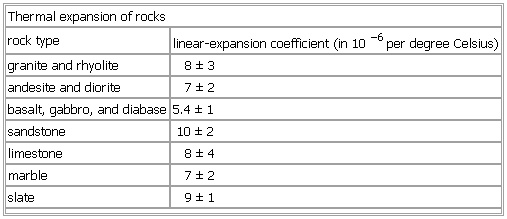Thermal expansion coefficients for some common materials.
Thermal coeffiient expansion marble.
K l length m q total heat transfer watt q heat flux w m2 r thermal resistance.
The marble institute of america s mia design manual references the tcna detail ej171 for expansion.
Cement concrete sand stone.
The change in area due to thermal expansion is δ a 2α a δ t where δ a is the change in area.
Several types of coefficients have been developed.
The thermal expansion of marble is about the same as granite coefficient of expansion in inches of expansion per inch of material per degree f.
This is easy to.
The change in volume due to thermal expansion is δ v βv δ t where β is the coefficient of volume expansion and β 3α.
Special thanks to reader eric.
This is given as the ratio of dimension change e g change in volume to the original dimension volume v per unit of temperature t change.
1 2 to 1 3 x 10 5.
List of thermal expansion coefficients cte for natural and engineered materials mse supplies is a leading supplier of high quality materials equipment and materials characterization services for advanced materials research and manufacturing.
Cement concrete quartzite.
The coefficient of thermal expansion describes how the size of an object changes with a change in temperature.
10 6 m moc 1 μm moc m m meter per meter in in inches per inches most values for temperature 25 oc 77 of.
Dl expansion in dt temperature differences c or k h heat transfer coefficient w m2.
The coefficient of linear thermal expansion clte of any material is the change of a material s dimension per unit change in temperature.
Thermal expansion coefficient of metals materials.
Thermal stress is created when thermal expansion is constrained.
0 9 to 1 2 x 10 5.
Thermal expansion the change in dimension linear or volumetric of a rock specimen with temperature is expressed in terms of a coefficient of thermal expansion.
Heat transfer coefficient from inside h heat transfer coefficient from outside k coefficient of thermal conductivity w m.
Granite 0 0000044.
Thermal movement can include temperature fluctuations and changes in environmental temperature.
Coefficient of expansion x temperature range x distance between joints.

